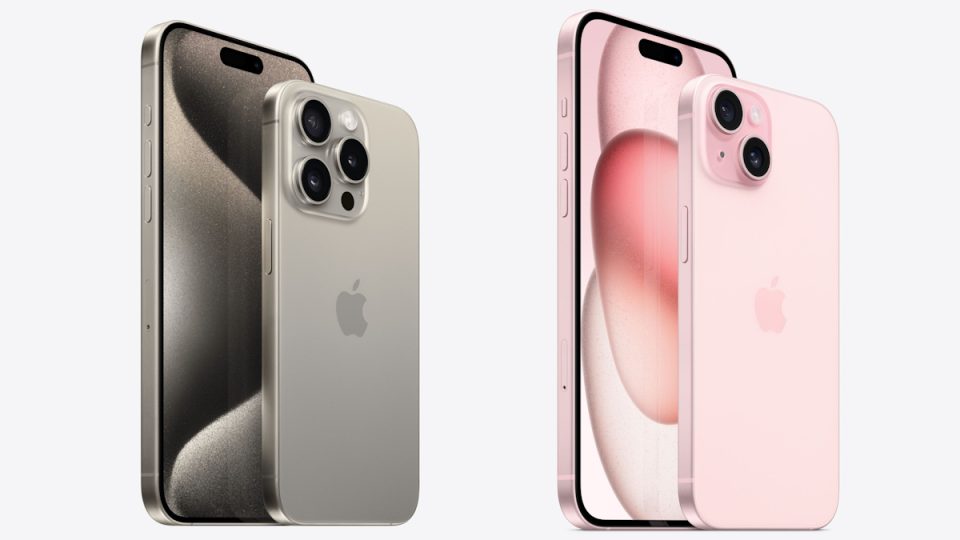In 2023, the iPhone 15 and iPhone 15 Pro have arrived, marking the culmination of a six-year journey since the iconic iPhone X. At first glance, they may not appear radically different, but a closer look reveals substantial iterative improvements that elevate these smartphones. While they might not outshine the previous year’s iPhone, they stand as significant upgrades, especially when compared to earlier models from 2017 and 2020.
The iPhone 15 embodies a culmination, representing a product that has undergone a multi-year evolution. Apple has adopted a smart strategy of treating the base model as a refined version of the previous year’s pro model. This approach not only addresses long-standing complaints about iPhones but also refines a design that has proven successful over time.
Pricing-wise, the iPhone 15 lineup maintains versatility. The standard iPhone 15 starts at $799 with 128GB of storage, offering options to upgrade to 256GB or 512GB for additional costs. The iPhone 15 Plus mirrors this storage configuration but starts at $899, a $100 premium.
The iPhone 15 Pro begins at $999 with 128GB of storage, while 256GB, 512GB, and even a 1TB variant are available at higher price points. The larger iPhone 15 Pro Max follows suit with a $200 premium at each storage level, except for the absence of the 128GB option.
For most users, 256GB or 512GB storage options strike a perfect balance given the devices’ capacity for high-quality video recording and the increasing size of mobile games. Those who prioritize economy can opt for 128GB, while power users who require 1TB storage for their extensive app collection and 4K video recordings have that option available.
The iPhone 15 continues to offer 6GB of RAM, but the Pro models have upped the ante to 8GB.
Display and Performance
In terms of display, the iPhone 15 series maintains its screen sizes, with the standard iPhone 15 and iPhone 15 Pro featuring 6.1-inch OLED displays. The iPhone 15 Plus and iPhone 15 Pro Max step up to 6.7-inch screens. The OLED screens boast resolutions of 2,556×1,179 pixels and 2,796×1,290 pixels, respectively.
Notably, the Pro models introduce a variable refresh rate, ranging from 1Hz to 120Hz, enhancing fluidity and responsiveness compared to the standard 60Hz rate. All four phones offer 1,000 nits of maximum brightness, with peaks of 1,600 nits for HDR highlights and 2,000 nits for outdoor visibility.
Performance Leap: A16 and A17 Chips
Under the hood, the iPhone 15 and 15 Plus are powered by the A16 Bionic chip, a familiar face from the previous year’s Pro models. While the A16 doesn’t represent a massive leap over the A15 chip found in the standard iPhone 14, it excels in memory bandwidth, particularly crucial for 3D gaming and advanced camera capabilities.
The iPhone 15 Pro and Pro Max, however, usher in a new era with the A17 Pro chip. Notably dropping the “Bionic” moniker, this 3 nm chip introduces a 6-core CPU, promising a 10% performance boost over the A16, and a 6-core GPU, which offers up to 20% faster performance. The GPU introduces support for cutting-edge graphics technologies like mesh shading and hardware-accelerated ray tracing, potentially enabling features typically reserved for PC gaming and current-generation consoles.
Apple also brings MetalFX, its AI upscaling technology, similar to AMD’s FSR or Nvidia’s DLSS, to the iPhone for the first time with the A17 chip, opening the door to improved graphics and image processing capabilities.
USB-C Revolution
Perhaps the most significant change is Apple’s transition from the proprietary Lightning port to USB-C, a well-established industry standard. While some speculated that Apple would hold onto Lightning until it could eliminate physical ports entirely, European Union regulations mandating USB-C in consumer devices pushed this change.
The benefits are clear: USB-C simplifies charging and accessory compatibility, allowing users to borrow chargers from other devices readily. However, the shift comes with short-term downsides, including an influx of deprecated Lightning cables in landfills and potential complications for users still using Lightning-based accessories.
USB-C also brings faster file transfer speeds, with the iPhone 15 Pro and Pro Max supporting USB-C 3.2 Gen 2, offering speeds of 10Gb/s compared to Lightning’s 480 Mb/s. This enhancement is particularly useful for content creators who can now record 4K, 60fps video directly to an external hard drive via the USB-C port.
Additionally, the Pro models can output to an external monitor via USB-C, though this feature is limited to basic screen mirroring.
Apple includes a USB-C-to-USB-C cable in the box to aid in the transition, though it doesn’t support the faster transfer speeds of the Pro models. Nonetheless, the inclusion of any cable is a welcome change.
Moreover, all the new iPhones, including the standard iPhone 15, can charge other devices via the USB-C port, making it convenient for users with additional gadgets.
In conclusion, the iPhone 15 and iPhone 15 Pro mark a culmination of years of iterative improvements, offering users a refined and powerful smartphone experience. The transition to USB-C aligns with industry standards, offering benefits in terms of compatibility and faster file transfers. With impressive performance gains, a versatile storage lineup, and enhanced display technology, these iPhones are a testament to Apple’s commitment to excellence in the smartphone market.




